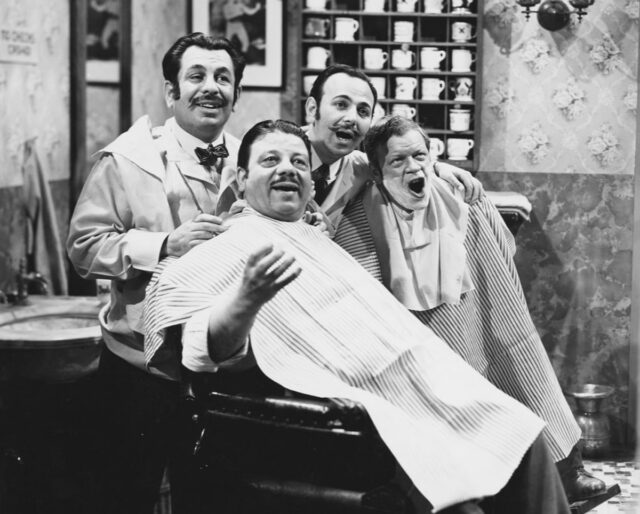tidelanders HISTORY
1946 - 1959
Introduction
From 1946 – 1959, the Houston Tidelanders had a crisis of identity. There were two paths presented. It could be a chapter dedicated to vaudeville acts like Minstrel Shows. Or, it could be a chapter dedicated to the Barbershop music hobby. Fortunately for the Tidelanders, chapter members decided to focus on barbershop singing and Quartets.
Minstrel Shows
Minstrel Shows were commonly found in the early 19th and 20th centuries. First, these shows were based on racial stereotypes of the times. Second, they featured exaggerated caricatures of African Americans. Hence the part of the minstrels were played by white males. Minstrels painted their faces black (aka “black face”). While most of the performers would be arrayed in a semi-circle, the interlocutor (what we call an emcee now) would be in the center. Subsequently, the “end men” would be located at either end. The performance then consisted of ballads, comic songs, and jokes. The end men, interlocutor, and chorus would interact and trade off performing.
Tidelanders Minstrel Shows
From 1946 – 1952, the Houston Tidelanders produced their own version of Minstrel Shows. Importantly, most other chapters in the Society did not have Minstrels Shows. Early chorus photos show a front row of men made up in black face. While considered offensive today, this was a common ingredient in Minstrel Shows. Accordingly, the Tidelanders would also feature two or three men on the front row, acting as the end men. Like the end men before them they would tell jokes and sing solos. Unlike their predecessors, they acted emcees.
Chapter Conflict
Evidently a large segment of the chorus was devoted to the Minstrel shows, especially older members. Regardless, there was another portion of the chorus devoted to pure Barbershop quartet singing. By the early 1950’s, the Tidelanders had only about 20 – 25 “full-time” Barbershoppers. These were men who attended chapter meetings all year. Then, during the two or three months before the Minstrel Show, membership would swell to 60 – 80 men. Consequently after the Minstrel Show was over many chose not to stay.
Popularity of Minstrel Shows
First, a glance through the Tidelanders archival material shows the immense popularity of Minstrel Shows. The shows would be held in a Music Hall that could seat approximately 2,500 people. Secondly, it was common for the Minstrel Shows to sell out both nights. Occasionally, special requests for out of town shows would be made. Due to their popularity a man once offered to pay all chorus expenses for a Minstrel Show in Dallas. Lastly, this popularity translated into money for the Tidelanders, making the habit harder for the Barbershop purists to break.
End of Minstrel Shows
Fortunately by 1952, the last chapter Minstrel Show was performed in Houston. Basically the Barbershoppers effort was aided by the growing Civil Rights movement. Indeed the Barbershoppers and the protest against racism and discrimination had won out. This change, while welcomed by the Barbershoppers, drastically reduced membership. Only twenty or twenty-five members were left and the slow journey to better-quality Barbershop singing began.
Cavalcade of Harmony
Eventually in the late 1950’s the Houston chapter performed “Neighborhood Community Park” shows. Annual shows, called the “CAVALCADE OF HARMONY” began during this time period. A cavalcade is known as a small parade or procession.

